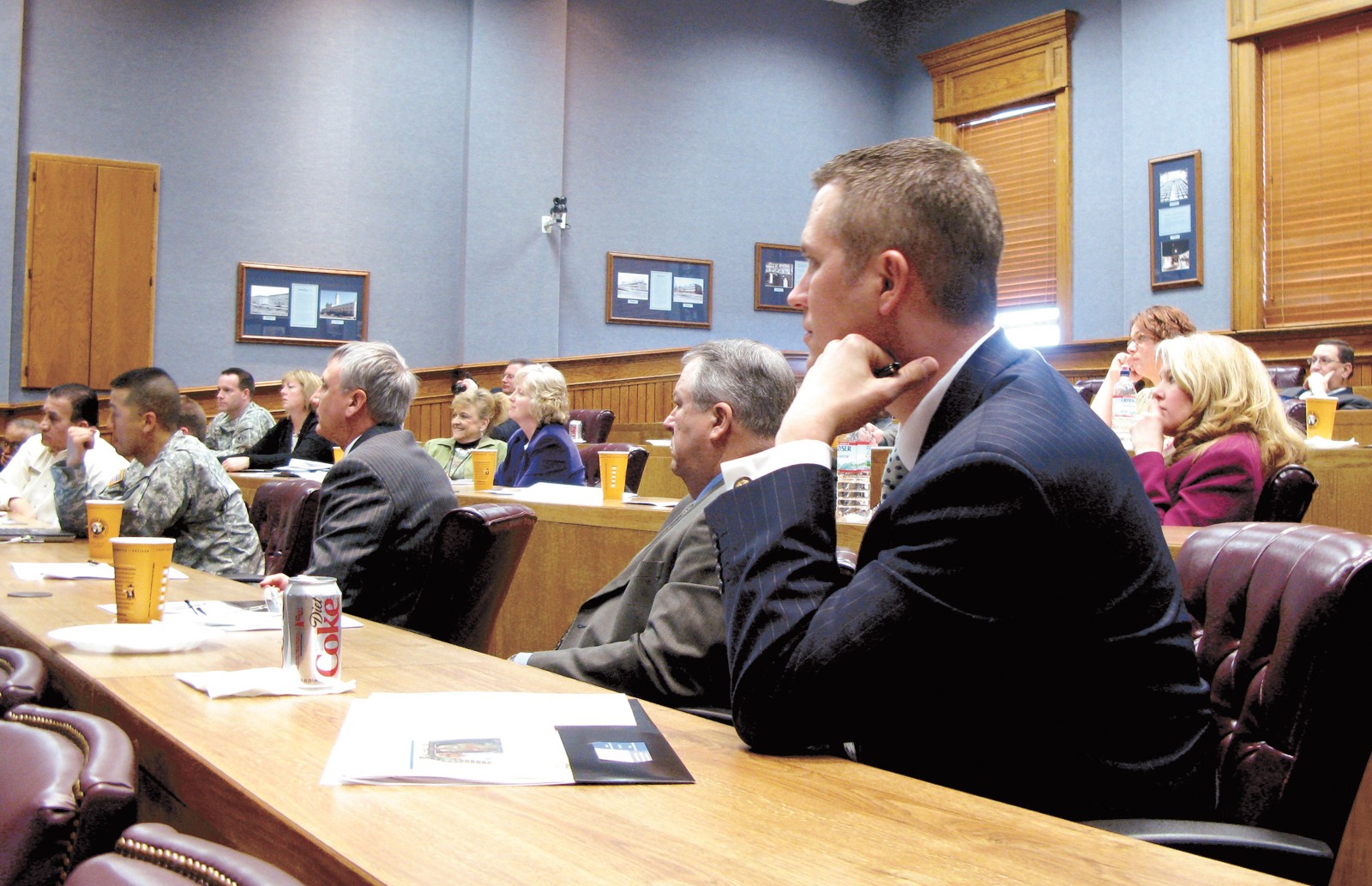
FORT LEAVENWORTH, Kan. (March 26, 2009) - Members of the Kansas City Federal Executive Board met March 19 in Fort Leavenworth's Grant Auditorium to learn how the Combined Arms Center is working to improve Army engagement and cooperation with international military and U.S. government organizations.
The Federal Executive Board meets monthly and provides a forum for interagency cooperation and coordination on issues affecting multiple governmental bodies, such as disaster relief and law enforcement. There are 27 regional FEBs in metropolitan areas across the U.S., and the 137 members of the Kansas City FEB represent about 38,000 civilian and military employees.
Members include the senior official of each department or agency, and can also include federal employees from other governmental groups. As the senior military commander in the region, Lt. Gen. William B. Caldwell IV, commander of CAC and Fort Leavenworth, is a member of the Kansas City FEB, but has designated his deputy, Dale Ormond, to be his representative.
Agencies represented at the March 19 meeting included the Department of Health and Human Services, Environmental Protection Agency, National Oceanographic and Atmospheric Administration, and Department of Homeland Security.
While several of the FEB members had prior military service, for most the meeting was their first visit to Fort Leavenworth and served as an "Army 101" introduction course. Ormond welcomed the FEB members and explained the basic structure and mission of CAC and Fort Leavenworth, highlighting the Command and General Staff College.
The members were briefed about how the Department of Defense, the Army and specifically CAC are working to engage the media and include international and interagency partners in schools and training. CGSC currently has international officers from more than 40 nations, and six interagency students from DHHS, the National Geospatial-Intelligence Agency and the Department of State.
Two international liaison officers, Col. Jean-Claude Brejot from France and Col. Mark Neate from the United Kingdom, explained to the FEB members why they believe it is important to include international officers at the college.
Neate said the British army has developed a comprehensive approach to operations, creating greater unity of effort among the various elements of national power, and that the U.S. Army has adopted a similar approach in its doctrine and operations.
"We recognize that our greatest ally and the one we are likely to deploy with is the U.S. We know that between our armies there is a much we have to learn and share," Neate said.
Ken Ferris, a CGSC student from NGA, explained the benefits of U.S. government agencies learning and training together in an environment like CGSC.
"It's an exciting time to be involved with the military right now at the Command and General Staff College. I don't think we've ever seen changes in the military like what we have now," he said.
Ferris pointed to emerging doctrine at CAC, like Field Manual 3-28, Civil Support Operations, as an example of the importance of increased cooperation between civilian agencies and the military.
Dan Ricci, a foreign service officer for the State Department and CGSC student, agreed the doctrine piece was important.
"We (the State Department) rely on the military to write the doctrine and collect lessons learned, and it's going to take decades for us to get up to that level where we have that doctrine repository that the military has," he said.
Several FEB members asked questions of the various presenters and expressed interest in learning more about the Army and how their agencies could work together with CAC.
"We're in an environment now where you don't have a military response and a civilian response; you have a government response or a federal response," said Jason Parman, Western Group manager for the Office of Personnel Management.
"I think it's critically important for all of the agencies to come together, understand the different activities we're all involved in, and then try at every level we possibly can to coordinate and collaborate," Parman said.
Romell Cooks from the Department of Transportation is the chairperson of the Kansas City Federal Executive Board. She said interagency cooperation and coordination with the military is vital to address issues, such as terrorism, that can affect every level of government.
"With the state of the world today, I think it's critical that all federal agencies know what's going on in the world, understand what their role is, and be a part of solving world issues," Cooks said, "knowing how we interact and should be interacting with the military, especially when we have such a large military function in this region."
For more information about the Kansas City Federal Executive Board, visit its Web site at http://kcfeb.gsa.gov.

Social Sharing